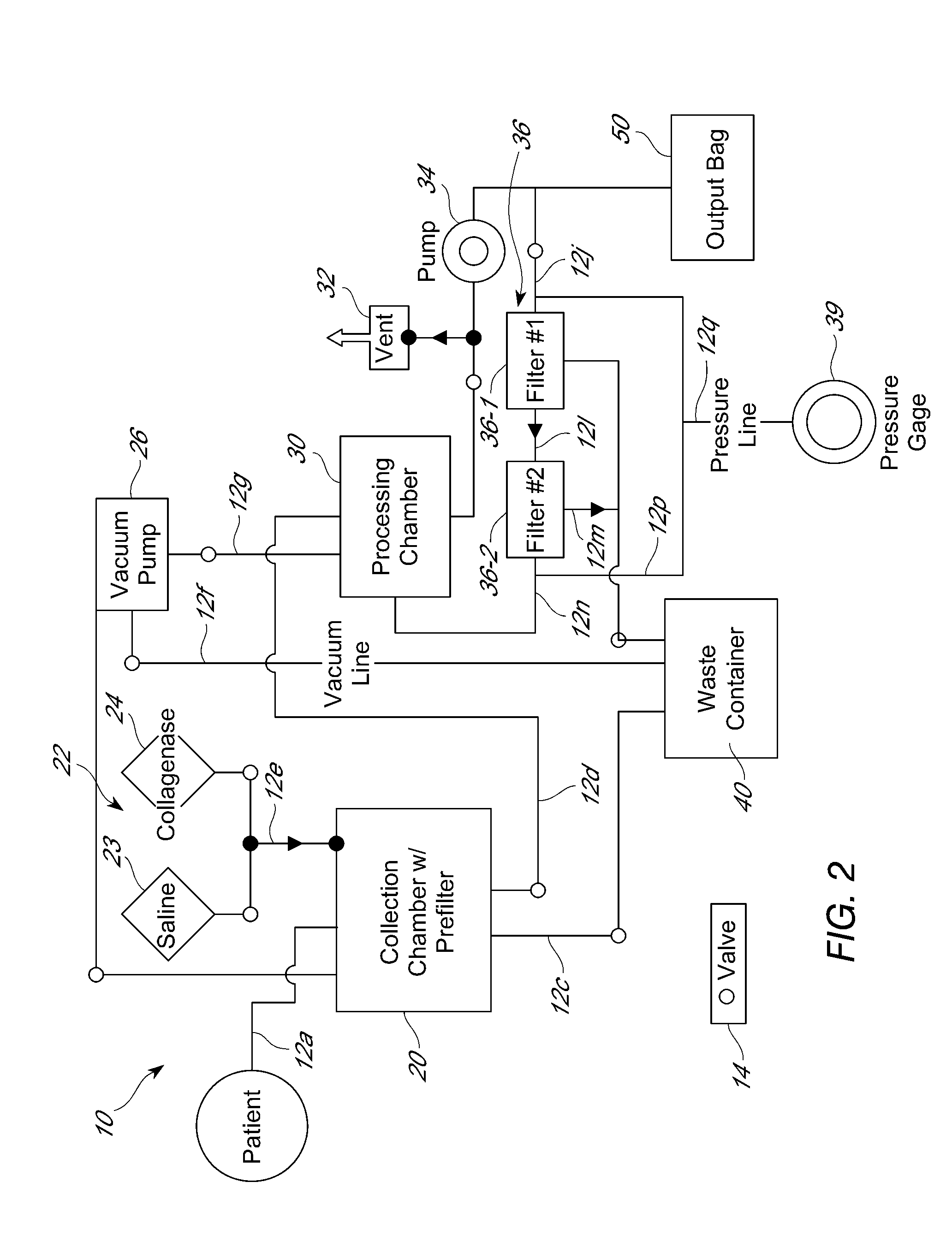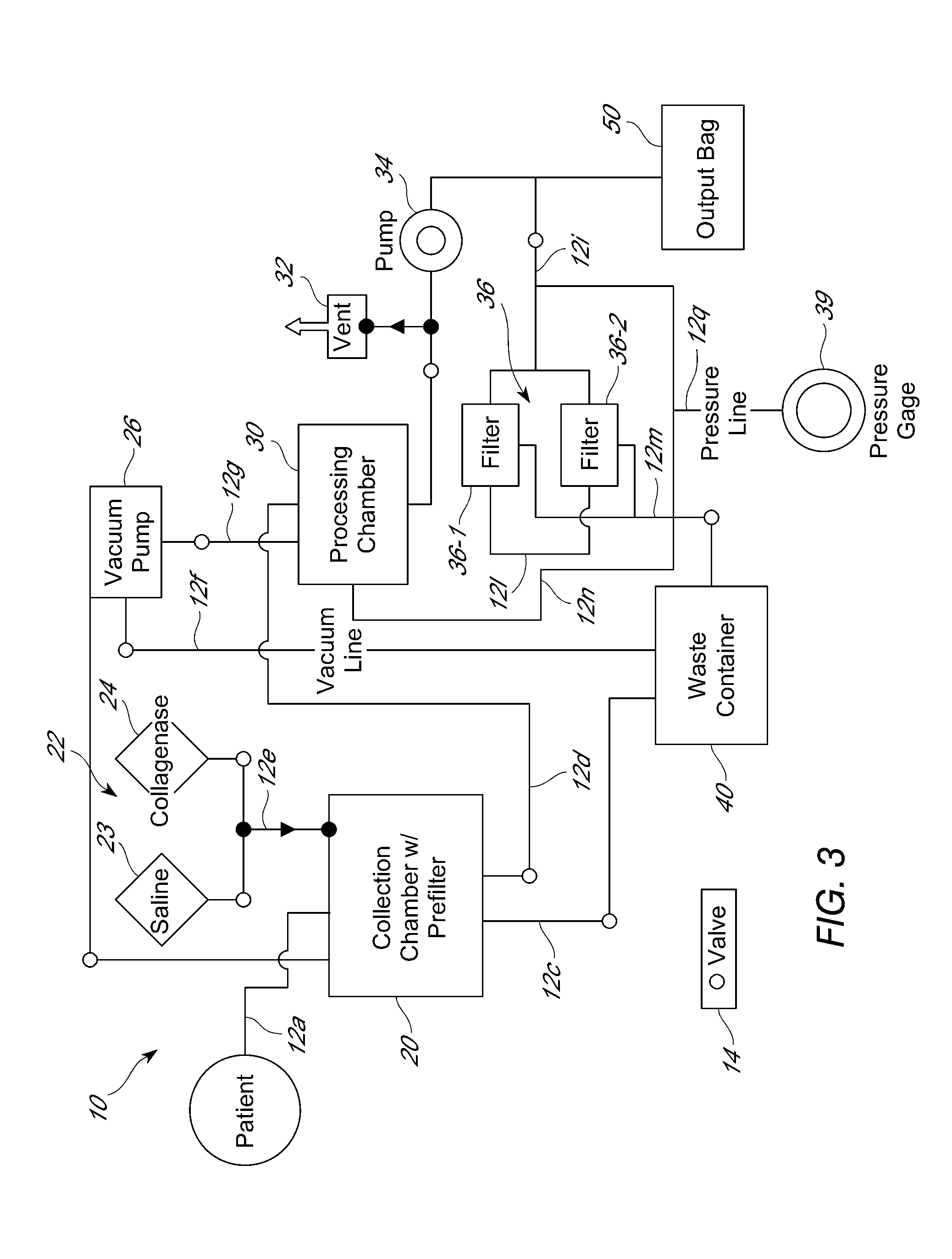Methods of using adipose tissue-derived cells in the treatment of the lymphatic system and malignant disease
a lymphatic system and lymphatic system technology, applied in the direction of skeletal/connective tissue cells, drug compositions, metabolic disorders, etc., can solve the problems of insufficient lymphatic system fluid transport ability, insufficient capacity of the lymphatic system to meet demand, and becs that cannot be expected to function in microvascular repair, etc., to achieve the effect of avoiding contamination, tissue rejection, and low morbidity of adipose tissue removal
- Summary
- Abstract
- Description
- Claims
- Application Information
AI Technical Summary
Benefits of technology
Problems solved by technology
Method used
Image
Examples
example i
Isolation of an Adipose-Derived Cell Population that Comprises LECs and / or Pre-LECs
[0302]Cell processing procedures that employed either a cell processing unit as described herein, or a manual method, were used to successfully isolate an adipose-derived cell population comprising LECs and / or pre-LECs. In manual processing, lipoaspirate removed from the patient was warmed in a sterile container in a 37° C. water bath. At this point, if bloody, the lower portion (blood-saline mixture) was removed aseptically using vacuum suction and discarded. The remaining material was then placed in a sterile separatory funnel with an equal volume of pre-warmed sterile saline, shaken gently, and the phases allowed to separate. Upon completion of separation, multiple layers were observed, with the adipose tissue floating on top and the blood-saline mixture below the adipose tissue layer. The stopcock was then opened to allow removal of the blood-saline mixture into a waste container. The washes were ...
example ii
Purification of a Cell Population that Comprises LECs and / or Pre-LECs by Density Gradient
[0306]This example describes one approach to purify LECs and / or pre-LECs from an adipose-derived cell population that comprises LECs and / or pre-LECs. An adipose-derived cell population that comprises LECs and / or pre-LECs can be obtained as described in Example I. A cell population was further purified by density gradient centrifugation using ficoll-hypaque as follows. The adipose-derived cell population that comprises LECs and / or pre-LECs obtained in Example I was layered onto “Lymphocyte Separatium Medium” (LSM—Mediatech, Inc) and subjected to density gradient centrifugation. The cell suspension was diluted to 107 cells / mL into DPBS (Ca++ and Mg++ free) and carefully overlayed on top of the LSM to create a sharp cell suspension / LSM interface in 50 mL conical tubes. The tubes were then centrifuged at 400 g with the brake off. For each volume of LSM, 2-3 volumes of cell suspension were used. Cent...
example iii
Purification of a Cell Population that Comprises LECs and / or Pre-LECs by Cell Sorting
[0307]This example describes a cell sorting approach that was used to further purify the LECs and / or pre-LECs from an adipose-derived cell population that comprises LECs and / or pre-LECs. It should be noted that this approach can be performed in lieu of the density gradient sedimentation procedure provided in Example II or, as presented in this example, in addition to the procedure provided in Example II. An adipose-derived cell population comprising LECs and / or pre-LECs obtained in accordance with the procedure provided in either Example II was strained using a 100 μm cell strainer and resuspended in sorting buffer, which contained D-PBS solution (Ca / Mg++ free) supplemented with 1 mM EDTA, 25 mM HEPES, 1% BSA (or 1% fetal bovine serum) and 10 U / ml DNAse I. FLT-4+ and FLT-4− cells were sorted using the FACSAria according to the manufacturer's instructions.
PUM
 Login to View More
Login to View More Abstract
Description
Claims
Application Information
 Login to View More
Login to View More - R&D
- Intellectual Property
- Life Sciences
- Materials
- Tech Scout
- Unparalleled Data Quality
- Higher Quality Content
- 60% Fewer Hallucinations
Browse by: Latest US Patents, China's latest patents, Technical Efficacy Thesaurus, Application Domain, Technology Topic, Popular Technical Reports.
© 2025 PatSnap. All rights reserved.Legal|Privacy policy|Modern Slavery Act Transparency Statement|Sitemap|About US| Contact US: help@patsnap.com



